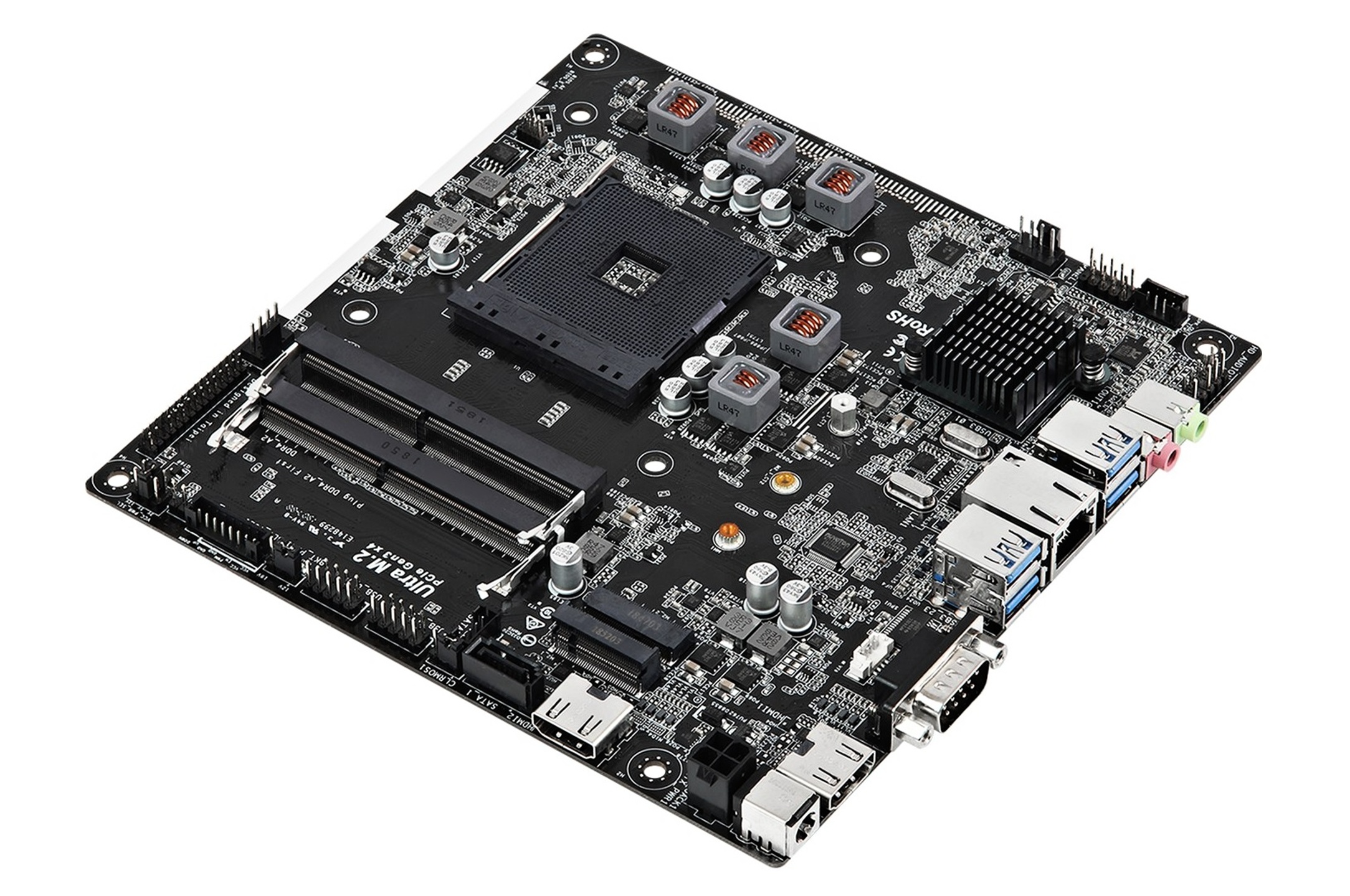Taking a look at Thin Mini-ITX AM4 motherboards
16 May 2021
Comments
Thin Mini-ITX standard was created by Intel for small form factor and integrated PCs. AMD based system were absent from this form factor but Asrock and some OEMs did ventured into it with A320 chipset supporting early Zen APUs. Let’s take a look at such OEM Thin Mini-ITX board — Quadro A4-320.
In simple terms Thin Mini-ITX is a Mini-ITX board that is powered by an external 19V power brick
(no ATX power supply) and has height limit at around 25-30 mm. If you would take a look at Intel design guide you would find a lot of requirements/good practices for this standard
in terms of connectivity, I/O placement and more. Intel sees Thin Mini-ITX boards as the building blocks of:
- All In One (AIO) PCs
- Stackable home theater PC to be size compatible with the standard width of AV components such as DVD players and receivers
- VESA mountable Thin PC
- Digital signage PC (Built inside or behind a TV or other display)
Some All In One PCs do actually use thin mini ITX board and you sometimes can find an Onda, Medion Akoya or just no-name board on second hand parts market. There are also Thin Mini-ITX boards for consumers but lately they have been superseded (to some extent) by nettops (like Intel NUC form factor).
Mini-ITX versus Thin Mini-ITX
ASrock seems like the only popular motherboard vendor that released an AM4 Thin Mini-ITX board for consumer and OEM markets. It supports Picasso, Raven Ridge and Bristol Ridge APUs — up to 65W TDP. If you would take a look at the board you can see a second HDMI port on the side which was likely intended for some AIO usage. 30-pin LVDS connector is another Thin Mini-ITX recommended connector and can drive displays up to 1080p 60Hz:
Asrock A320TM-ITX Thin Mini-ITX board
LVDS display connector
As AMD did not released Zen 2 APUs for consumers on the DIY market there was likely no reason to release a board with a newer chipset that would support them. As of the time of writing this article there are not AM4 Thin Mini-ITX boards with a chipset other than A320 so no support for Zen 2 or newer.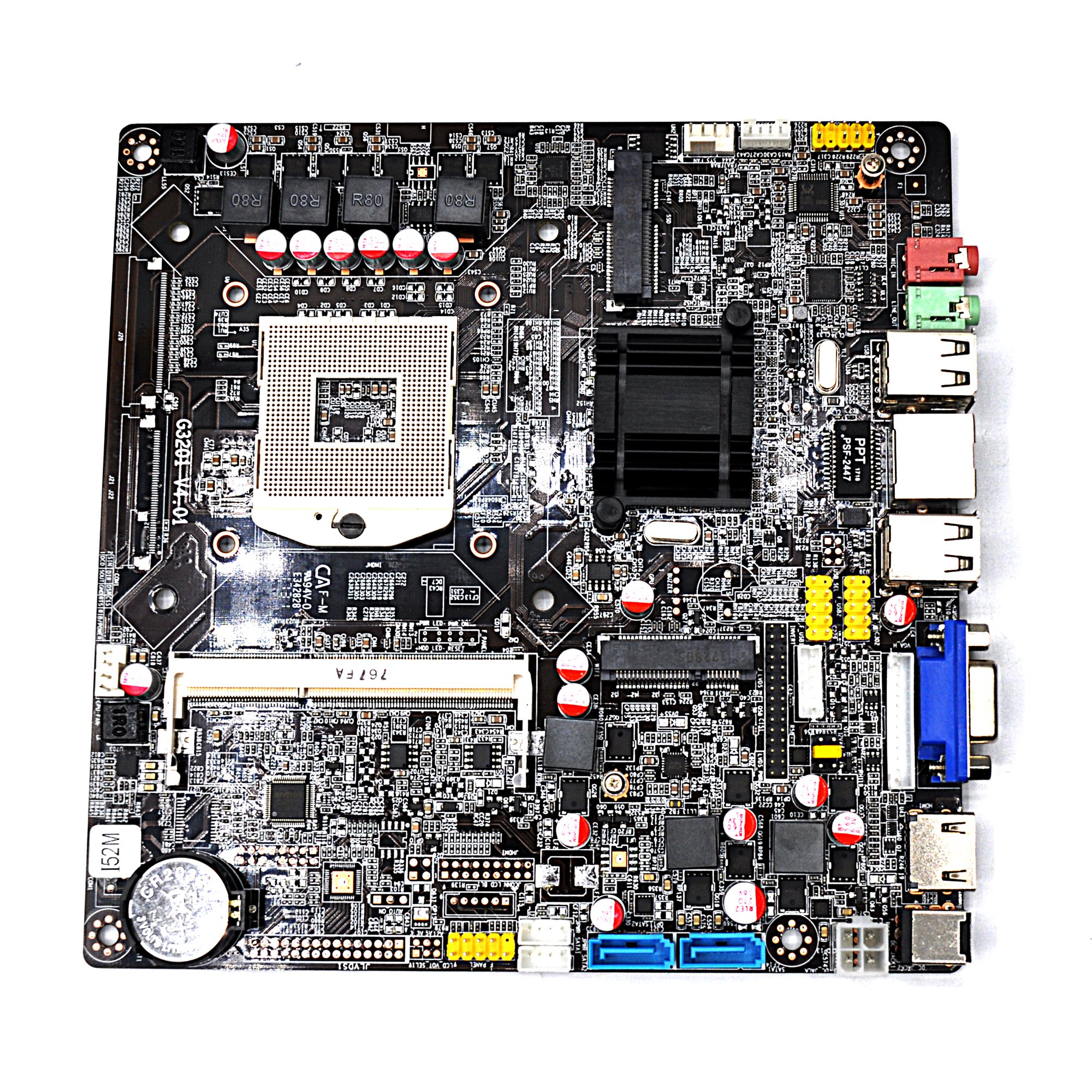
Aliexpress as well as other Chinese sites offer a no-name Quadro A4-320 board that is similar to the Asrock one. I’ve also seen this board under the brand of Onda — and likely it is used in some AIO. The board does not come with an I/O shield so it even more likely it was made only for AIO and not consumer DIY PCs.
Quadro A4-320
Quadro A4-320 rear I/O
The board has 2 SATA ports with custom SATA power connectors (only one matching cable in the box) due to no ATX power supply in the system. One NVMe drive and a WiFi/BT card can be installed as well. The system is powered by a 19V power adapter via the barrel plug on the back or via internal 12V ATX connector for integrated systems.
SATA and SATA power connectors
The board worked as expected, but during testing the M.2 connector soldering broke off from one side preventing M.2 from working (re-soldering required). The BIOS is also quite basic without much options.
In terms of power draw I used a lab DC power supply set to 19V. When off the 2200G system (2 SO-DIMMs, USB keyboard and mouse, NVMe drive, Akasa cooler) draw 0,57W. Idle power draw was 22,8W, during Tesseract shooter benchmark it risen to 64,6W and during Kernel compilation up to 74,1W.
When off the 2200G system (2 SO-DIMMs, USB keyboard and mouse, NVMe drive, Akasa cooler) draw 0,57W. Idle power draw was 22,8W, during Tesseract shooter benchmark it risen to 64,6W and during Kernel compilation up to 74,1W.
Thin Mini-ITX is an Intel standard and thus thin coolers or even cases were designed around Intel 115X systems. Due to this both AM4 Thin Mini-ITX boards are not compatible with AM4 coolers but instead use the Intel 115X coolers — and if you use a Thin Mini-ITX case you can only use coolers that have around 20-25mm of height so there is a reason for this change. Such low profile coolers are mostly made by Akasa but you will find few other brands as well.
Akasa AK-CC7129BP01 21mm cooler
Akasa AK-CC7129BP01 cooler is rated for 73W TDP CPUs and the sheet states 30.75 dBA as the max noise level it can produce. The height is only 21mm which allows it to fit in cases designed for this form factor:
Thin Mini ITX case
Akasa and few other companies also make fanless cases where the case becomes the radiator:
Akasa Euler fanless case
As you can see the whole ecosystem revolves around small form factor systems that could be used as media PCs and alike.
AM4 vs 115X coolers in practice
A lot of 115X coolers can have a small round cold plate which limits the contact surface area:
Akasa cooler contact area
This could limit the cooling capabilities but there are alternatives with bigger rectangular cold plates as well — so if you want optimal cooling you can go through few shops until you find one.
What’s questionable is mounting pressure. When I used the Intel stock cooler the pressure was kind of meh as the Arctic Silver Ceramique 2 thermal paste was barely squished
. When I mounted a basic tower cooler that used a backplate the pressure looked much better:
Intel stock cooler
Silentium PC Spartan 4 MAX tower cooler
Tower cooler made much better contact with the IHS
When building a Thin Mini-ITX system, especially with the AM4 socket it’s likely better to go for a cooler that uses a backplate. That way you can add washers to increase the mounting pressure if needed.
If we look at the thermals for Ryzen 3 2200G (4C/4T 3,7GHz single core boost, 3,65GHz all core boost) the Akasa AK-CC7129BP01 could only manage 3496 MHz in all-core stress test while hitting the thermal limit.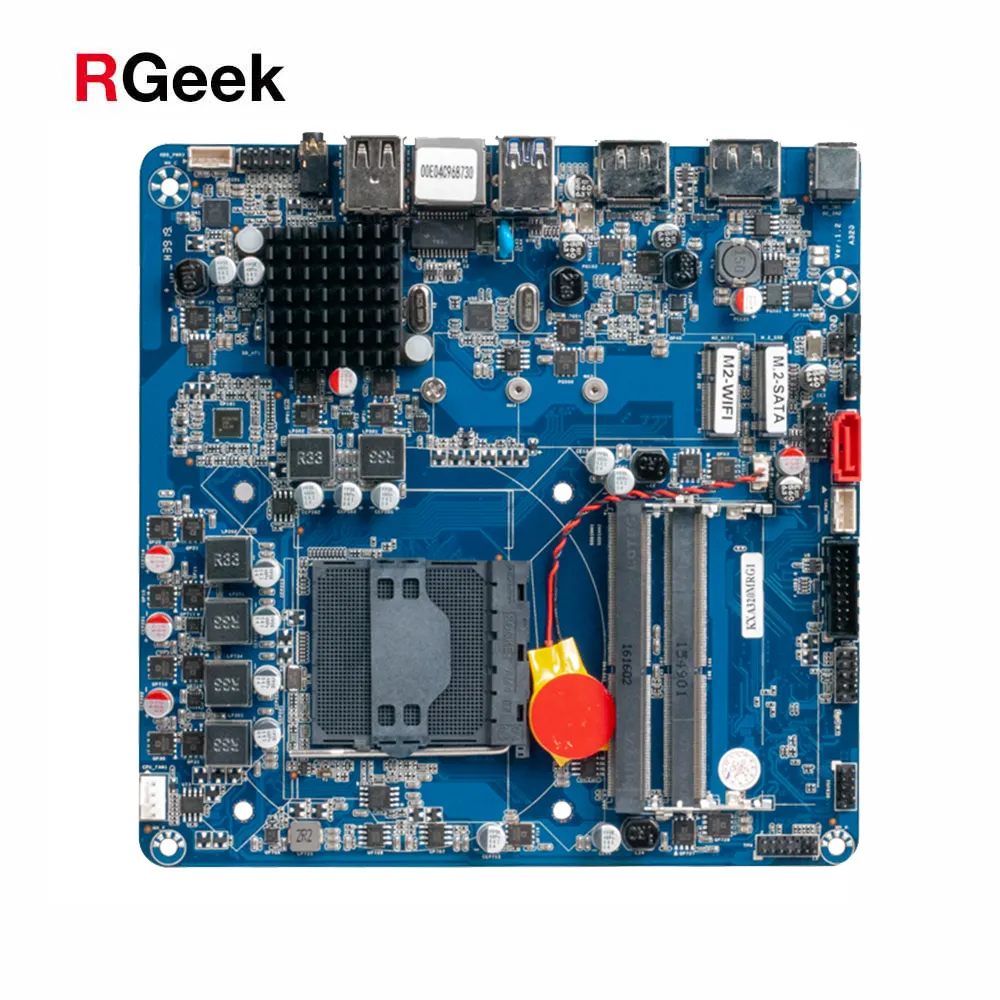 The Spartan 4 tower cooler allowed for 3672 MHz all core clock speeds while not hitting the thermal limit of the Ryzen 2200G:
The Spartan 4 tower cooler allowed for 3672 MHz all core clock speeds while not hitting the thermal limit of the Ryzen 2200G:
Ryzen 2200G plus Akasa AK-CC7129BP01 CPU stress test
Ryzen 2200G plus Spartan 4 CPU stress test
You can’t use a tower cooler in a Thin Mini-ITX system but it shows that super small cooler with a small fan won’t be the top performer for high APU loads. Much larger mass fanless cases that function as radiators could be better but that depends on the ambient temperature and ambient airflow around the device.
Due to space and height restrictions Thin Mini-ITX boards use horizontally oriented SO-DIMM memory slots. This isn’t much of a problem for Intel CPUs but AM APUs can benefit from high end DDR4 memory. A Zen 2 APU like 4650G can handle 4600 MT/s CL16 (or better) with memory to Infinity Fabric clocks at 1:1 ratio (where as desktop Zen 2 and Zen 3 max out for 1:1 ratio at around 3800 MT/s RAM). This boosts iGPU and the CPU performance noticeably.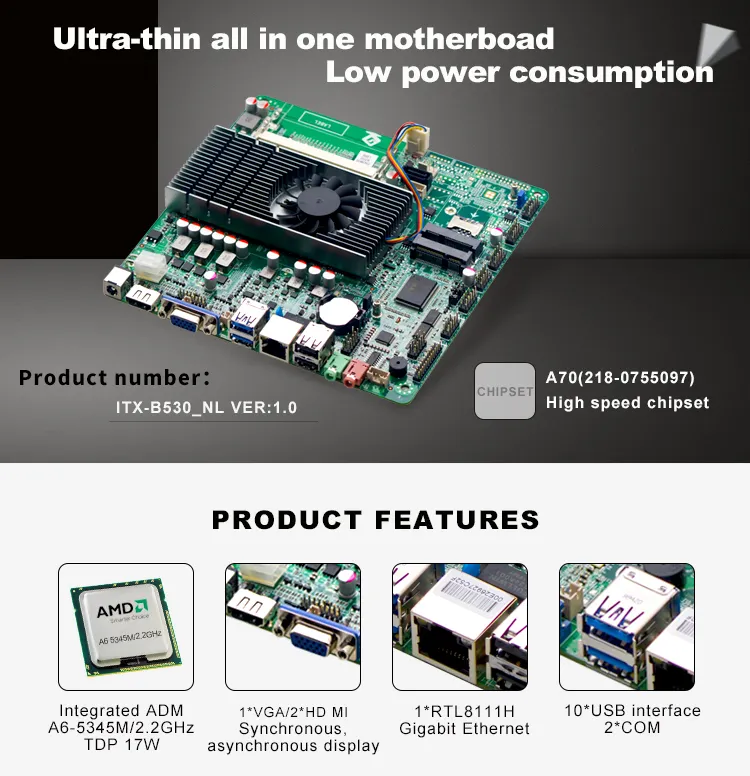 Having to use JEDEC mobile SO-DIMM RAM kits means we are limited to at best 3200CL22 kits (and some
Having to use JEDEC mobile SO-DIMM RAM kits means we are limited to at best 3200CL22 kits (and some better
ones may be 1.35V instead of 1.2V kits which likely won’t be compatible).
If you want the best APU gaming system then Thin Mini-ITX likely will not provide it. You will pay extra for the case and board (assuming there will be such board) and then you will have to use lesser RAM. In a standard mini-ITX system you will likely pay bit less for the board and case (unless it’s a G.A.M.I.N.G RGB board), while paying more for a better RAM you will be able to get more performance from and better cooling at a somewhat bigger form factor (height).
To compare Ryzen 3 2200G performance on A320 Thin Mini-ITX board and B350 standard board I ran few Phoronix benchmarks on Ubunut Linux — 2105153-HA-2105156HA77. I used 2x4GB 3200CL22 SO-DIMM ram and 2x8GB 3200CL22 JEDEC desktop RAM (while you could try a much better kit with an XMP profile). The 2200G is bit old and overall did not use the highest presets for both JEDEC RAM kits. The SO-DIMM was running at 2400 CL17 while the desktop kit clocked at 2800CL19 (JEDEC RAM kits have few profiles and the system
The SO-DIMM was running at 2400 CL17 while the desktop kit clocked at 2800CL19 (JEDEC RAM kits have few profiles and the system chooses
the highest it can handle — it’s no like XMP where you can choose a profile).
The results show around 15% performance uplift for game/game-alike benchmarks (Tesseract shooter, Unigine Superposition and Valley) on the desktop board. CPU compute benchmarks (Kernel compilation, Blender rendering, BZIP2 compression) showed around 7% uplift. On Windows both boards showed same behavior (clocks, power) under the CPU-Z stress test.
Tesseract shooter benchmark
Blender CPU rendering benchmark
And in my previous article about comparing desktop and mobile RAM I’ve tested this board and a 2400CL17 desktop RAM kit to see if there would be a difference for ~same timings:
Aida64 showed bit lower latency and better transfer speeds for the desktop DIMM configuration.
Here it’s clear that the A320 with SO-DIMM memory performs worse in World of Warcraft than a B450 board with desktop memory.
Thin Mini-ITX is a handy standard for fanless and very small systems. If AMD launches Zen 2 and/or Zen 3 widely for DIY market then maybe we will see a new Thin Mini-ITX board for them. Combined with a fanless radiator-case it would be an excellent media/always-on system. For pure gaming on the integrated graphics likely standard Mini-ITX will be better — for cooling and desktop RAM.
Nettops with like 4700/4800U (Asus PN40) or 4800H (Aliexpress) are available but those usually use laptop-style cooling which can be more noisy than even Thin Mini-ITX solutions. The availability and ease of use is better but depending on design the thermals and noise can be worse.
For makers and when prototyping some devices Thin Mini-ITX can offer some extra flexibility of like LVDS connector for displays and simpler power delivery than a standard ATX based motherboard. There are x86 small single board computers (aside of ARM ones) but those tend to be much more expensive and rather limited in terms of I/O and features.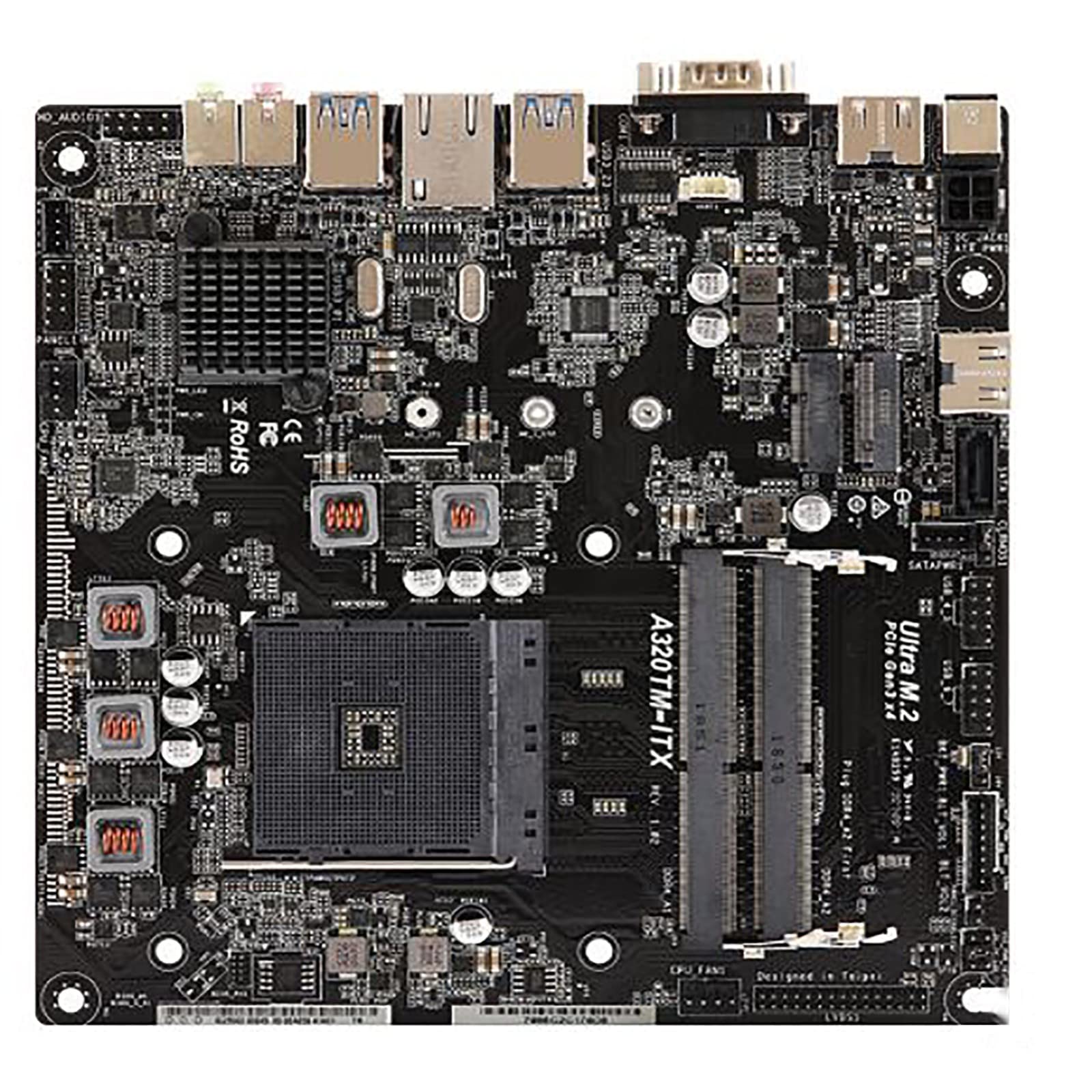
Thin Mini-ITX board with integrated Pentium 4405U
Thin Mini-ITX h410 board for 8/9-th gen Intel desktop CPUs
RkBlog
ASRock’s cheap chipset-less Thin Mini-ITX motherboard with AM4
There are only a few modern motherboards of the Thin Mini-ITX format. The latest among them is the ASRock X300TM-ITX. It is in its essence very simple and does not even have its own chipset. The equipment of the board is thus more modest, but it will be one of the cheapest options for AMD APU. Support is across all classes, from Athlon Raven Ridge to the highest performance Renoir (Ryzen 7 Pro 4750G).
The new ASRock X300TM-ITX motherboard has been released. It is designed for smaller computers that require half the height of the I/O shield. In this case, it is only 2.5 cm (1″) high, as on other Thin Mini-ITX boards. The area dimensions of the PCB are otherwise common with traditional Mini-ITX format motherboards, i.e. 170 × 170 mm.
The ASRock X300TM-ITX is a bit strange in that its design does not include a southbridge, but this board does not even work with it. Only the integrated northbridge (SoC) in Athlon and Ryzen processors is used for operation.
Only the integrated northbridge (SoC) in Athlon and Ryzen processors is used for operation.
All models with Raven Ridge, Picasso and Renoir core models are supported, including the 65-watt ones. The 5-phase power phase design of the board is quite decent and also uses a 4-pin additional power supply. However, the use of processors without iGPU is not considered. First, they all have a higher TDP than supported, and most importantly, the board does not have a PCI Express ×16 expansion slot, so you will not connect a graphics card to it.
It also differs from most standard Mini-ITX boards by using smaller SO-DIMM memory slots. There are two and officially support dual channel 64 GB DDR4-2933 (Raven Ridge and Picasso) and DDR4-3200 (Renoir), respectively.
The RJ-45 network connector (Realtek RTL8111GR) as well as the external USB ports are run from separate controllers. All four USB connectors on the rear panel are of the 3.2 gen 1 standard (i.e. with 5 Gb bandwidth), while one of them can be optionally type C. You can run four extra USB connectors (this time only of the 2.0 standard) onto the PC case from the internal headers.
You can run four extra USB connectors (this time only of the 2.0 standard) onto the PC case from the internal headers.
There are also two M.2 slots among the internal connectors. One for the WiFi/BT module (not included) and the other for SSD with full PCIe 3.0 ×4 support. You can also connect one traditional 2.5″ SATA storage to the board.
It is also worth mentioning that the board has up to three video connectors. One of them is internal LVDS, which is mainly used to connect LCD displays in laptops. This may be a more suitable option for pre-built computer systems than an external connection, but will only display 1920 × 1080 px at 60 Hz. Only the two external HDMI 2.1 connectors will allow higher resolution. A serial COM port is also included.
When and for what price the X300TM-ITX will be sold was not revealed by ASRock in the press release. But since this is not an announcement but a release and it’s already listed on the ASRock website, the availability in stores can be expected any day.
Back to: ASRock X300TM-ITX
- ASRock X300TM-ITX
Flattr this!
ASRock motherboards
NVIDIA Fermi will not be released soon
©
Difficult times have come for video card developers. The increasingly complex shift to finer GPU manufacturing workflows has backfired on both of the industry’s leading companies: AMD’s is bogged down in its inability to deliver the right number of products to market, and NVIDIA’s is constantly delaying the release date of its latest development.
Internet resource VR-Zone, referring to the words of the head of NVIDIA , finally dispelled all rumors about the timing of the appearance on the market of video cards based on chips with the Fermi architecture. Previously, there was hope that NVIDIA will begin mass production by the New Year holidays, but now it became known about the company’s intention to postpone the premiere to next year.
During the Q1 press conference, NVIDIA CEO Jen-Hsung Huang spoke about the difference between the first quarter of fiscal year 2010 and other first quarters of previous years, which will be reflected in the exceptionally high volume of GPU orders . And the reason for this will be the release of 40-nanometer GPUs with architecture Fermi for three product lines: GeForce , Quadro and Tesla .
The boundaries of the first quarter of the next financial year for NVIDIA are very blurred and are between January 26 and April 26, 2010. This means that, according to the most optimistic estimate, solutions based on Fermi will appear on store shelves in four to five months. Thus, the ATI Radeon HD 5800 series, which debuted in the second half of September, again receives a temporary advantage, which gives AMD is a second chance to outperform the competition, but only if TSMC still starts producing 40nm graphics chips with a higher yield.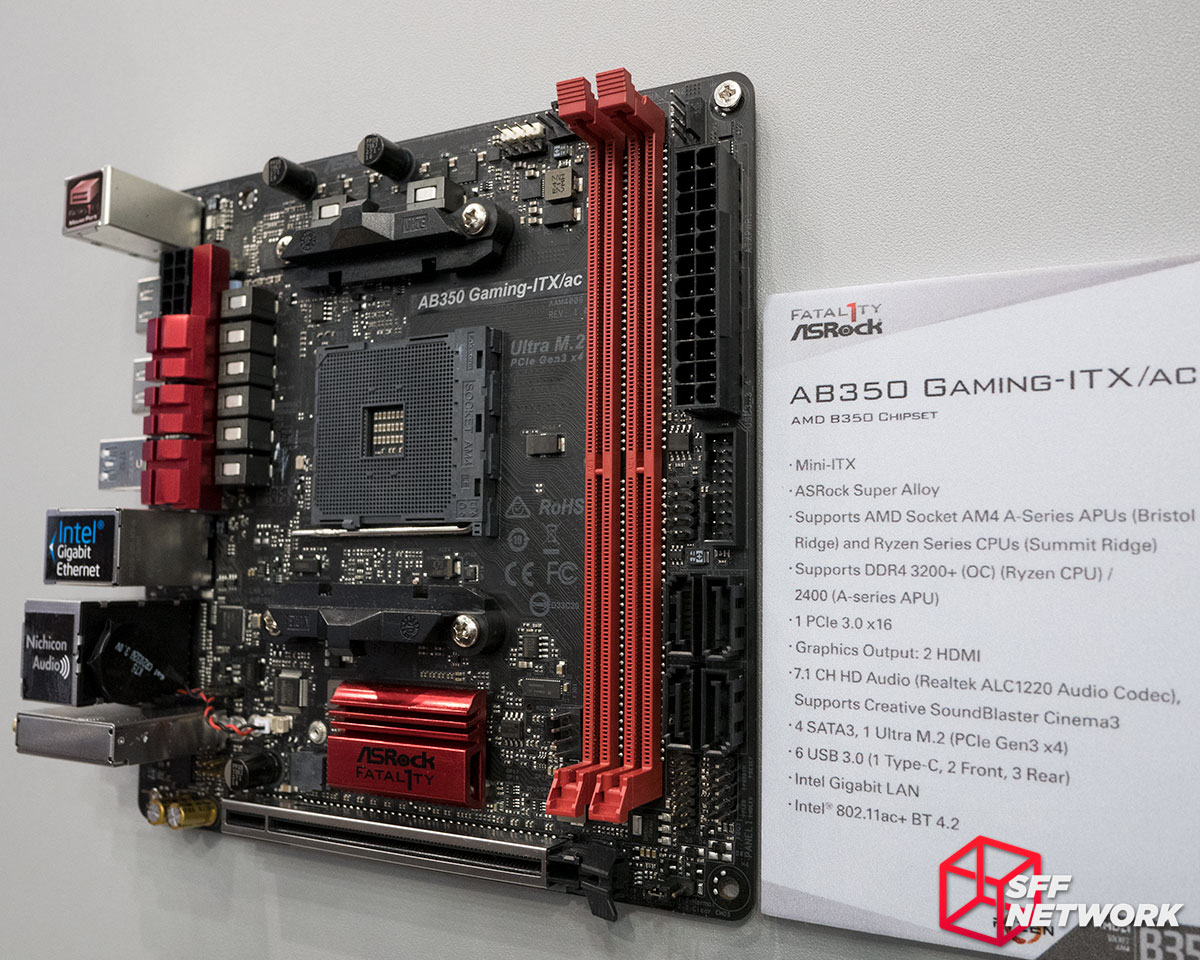
Cooler Master Susurro is a quiet copper miracle for AMD64
One of the arguments in the heated debate between fans of AMD and Intel products has recently become the hotness factor.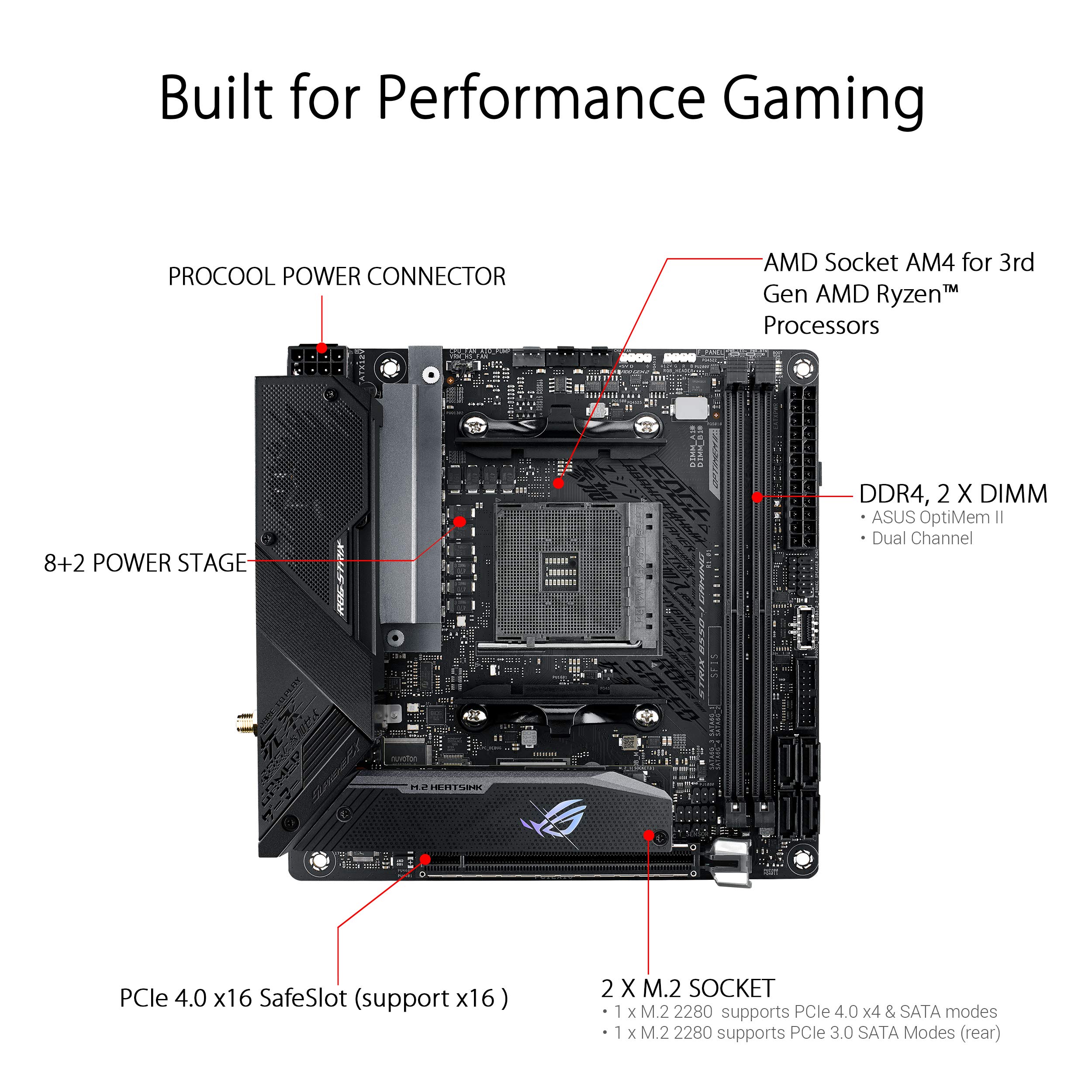 That is, some argue (and others are trying hard to refute) that the latest generation of AMD Athlon 64 processors has significantly lower power consumption and heat dissipation than the latest competitor products in the Desktop segment. At the risk of incurring the disgrace of both, we will not now discuss who is actually right;). And let’s talk, in particular, about what exactly the advantages of using energy-saving technologies in AMD K8 processors promise to an ordinary user, except for, in fact, a smaller fee for an electric meter. 🙂 And another reason for such a conversation was the release by the eminent Cooler Master (Cooler Master company) of a new cooler model for the AMD platform — with the sonorous name Susurro.
That is, some argue (and others are trying hard to refute) that the latest generation of AMD Athlon 64 processors has significantly lower power consumption and heat dissipation than the latest competitor products in the Desktop segment. At the risk of incurring the disgrace of both, we will not now discuss who is actually right;). And let’s talk, in particular, about what exactly the advantages of using energy-saving technologies in AMD K8 processors promise to an ordinary user, except for, in fact, a smaller fee for an electric meter. 🙂 And another reason for such a conversation was the release by the eminent Cooler Master (Cooler Master company) of a new cooler model for the AMD platform — with the sonorous name Susurro.
We have already discussed in our publications more than once what are the features and benefits of AMD Cool’n’Quiet power-saving technology used in AMD K8 architecture processors. Briefly, its essence is that while the processor is idle, the frequency of the Athlon 64 core can be reduced up to 1000 MHz with a simultaneous decrease in the supply voltage. As a result, if at full frequency under load such a processor consumes, say, 60-80 watts, then when idle, its heat dissipation drops to 10-20 watts! The key point here is that in AMD Cool’n’Quiet processor switching between modes with different frequency and supply voltage occurs in our experience almost instantly (on a microsecond scale), that is, if the PC processor is busy working occasionally (for example, when working in office programs, with graphic, audio and video editors, when listening to music or watching videos, as well as in many games), and not full time, then in those, even small, millisecond periods of time when it is idle, it switches to economy mode. As a result, the average heat dissipation of the processor becomes proportional to the percentage of its workload. That is, if, say, during active office work, the processor is loaded on average by about 10%, and when working with multimedia content, by 20-30 percent (judging by the CPU load measurements averaged over the time of passing the corresponding scenarios in the SYSmark 2004 package ), then the average processor heating will be conditionally proportional to these percentages (strictly speaking, when calculating the average heat dissipation, one should take into account not only the initial and final core frequencies and supply voltages, but also the time intervals during which the processor was in these states, but also , that in the first approximation, the processor consumption is proportional to square clock frequency, and there are also areas of the crystal where the frequency does not decrease — the memory controller, system bus, etc.
As a result, if at full frequency under load such a processor consumes, say, 60-80 watts, then when idle, its heat dissipation drops to 10-20 watts! The key point here is that in AMD Cool’n’Quiet processor switching between modes with different frequency and supply voltage occurs in our experience almost instantly (on a microsecond scale), that is, if the PC processor is busy working occasionally (for example, when working in office programs, with graphic, audio and video editors, when listening to music or watching videos, as well as in many games), and not full time, then in those, even small, millisecond periods of time when it is idle, it switches to economy mode. As a result, the average heat dissipation of the processor becomes proportional to the percentage of its workload. That is, if, say, during active office work, the processor is loaded on average by about 10%, and when working with multimedia content, by 20-30 percent (judging by the CPU load measurements averaged over the time of passing the corresponding scenarios in the SYSmark 2004 package ), then the average processor heating will be conditionally proportional to these percentages (strictly speaking, when calculating the average heat dissipation, one should take into account not only the initial and final core frequencies and supply voltages, but also the time intervals during which the processor was in these states, but also , that in the first approximation, the processor consumption is proportional to square clock frequency, and there are also areas of the crystal where the frequency does not decrease — the memory controller, system bus, etc.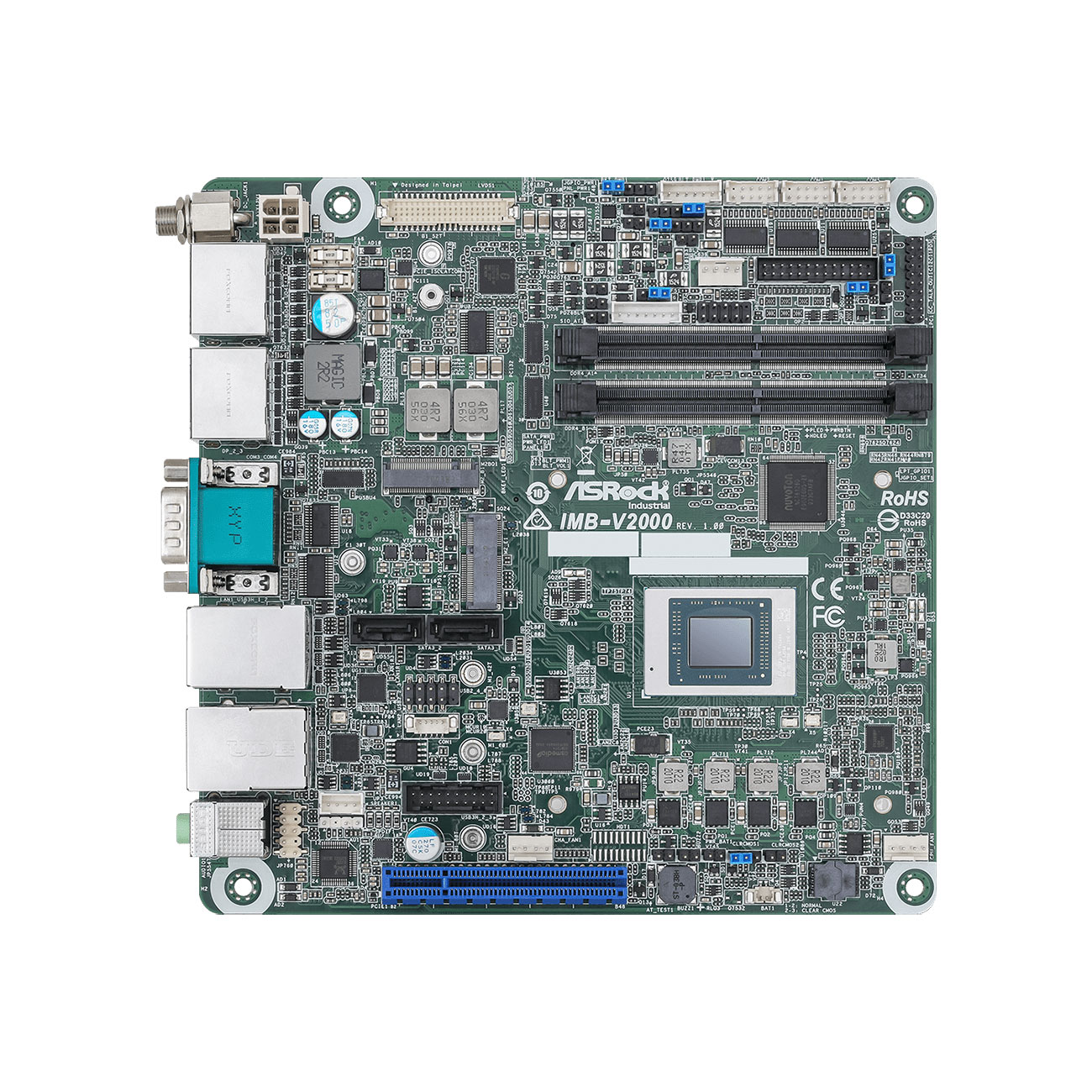 ).
).
In these categories of reasoning, the bulk of the PC is simply idle most of the time , which means that processors with modern energy-saving technology (be it AMD Cool’n’Quiet or Enhanced Intel SpeedStep Technology) emit significantly less heat than at maximum. In order to translate this bonus not only into lower material costs for electricity, but also into simple human comfort — that is, to reduce the noise of computers — many manufacturers have long begun to equip their cooler models with special circuits that control the propeller speed from a temperature sensor — the colder it is the lower the speed and the noise emitted by the cooler. Indeed, why turn the impeller at full speed, if only a small fraction of the full (at full speed) passport heat transfer of the cooler is enough to cool the processor at idle or at low load (see above)? Yes, and in the BIOS of motherboards they began to build in the functions of controlling the speed of rotation of the cooler depending on temperature.
The trouble with most coolers with thermal sensors (including the so-called boxed coolers) is that they have a thermistor, as a rule, located on the fan stator board and at the same time measures the temperature of the air injected into the cooler (which, as a rule, is enough cold). As a result, the whole idea of thermal speed control is leveled and the control itself becomes not very effective, which has been repeatedly noted (see, for example, articles here, here and here). It would be much more correct to regulate the speed depending on the temperature of the processor core, which is done through the BIOS of a number of motherboards. However, this is also not a very optimal approach, since a dynamically changing core temperature with an incorrect regulation characteristic will make the fan often “howl”, quickly changing the rotation speed. In addition, if it is possible for a circuit placed in a cooler to change the speed several times, then it is problematic to reduce the speed even by half through the BIOS of motherboards (as a rule, the motherboard allows you to change the voltage on the propeller from +12 to +7 (less often +6 ) volts), and the noise level of the cooler due to such a “half-change” does not drop so drastically (although it’s a bird in the absence of fish and cancer).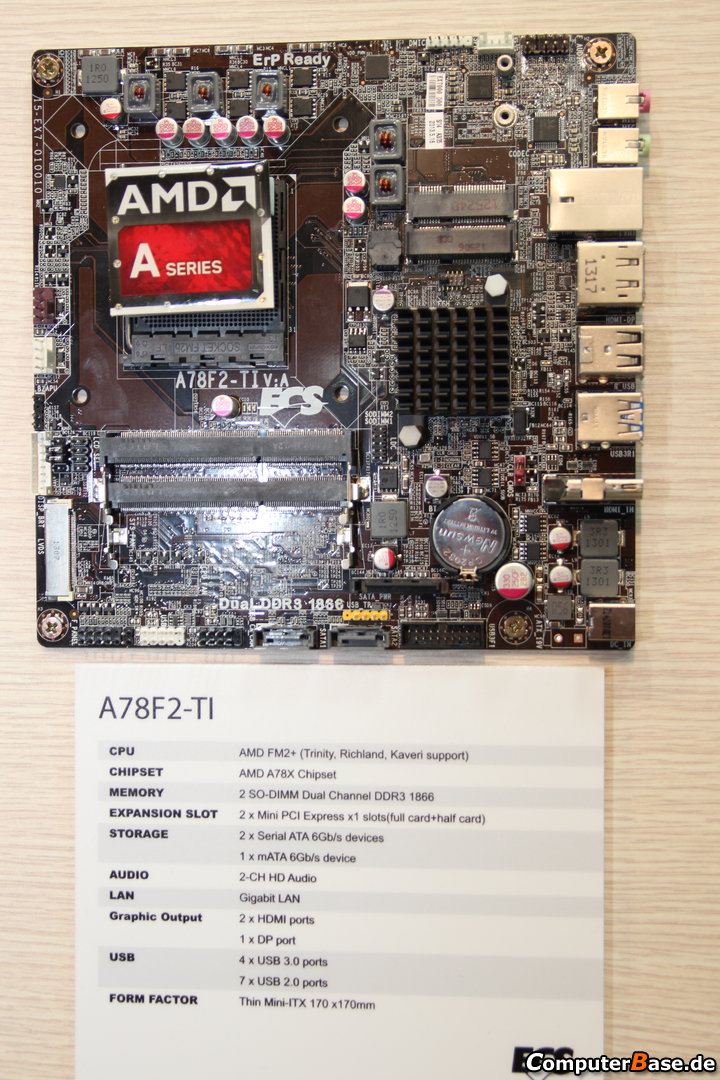 Moreover, with coolers that already have a built-in speed control circuit from the thermistor, voltage regulation from the motherboard is often simply problematic (the exception is the new four-wire fan control standard on LGA775 boards). As a result of all this, we get a typical situation when «the bottom wants, but the top cannot.» 🙂
Moreover, with coolers that already have a built-in speed control circuit from the thermistor, voltage regulation from the motherboard is often simply problematic (the exception is the new four-wire fan control standard on LGA775 boards). As a result of all this, we get a typical situation when «the bottom wants, but the top cannot.» 🙂
The problem with a cardinal reduction in the noise of the CPU cooling system at low load calculations can be solved by a cooler, where a thermal sensor measures the temperature of the radiator near its base: here the temperature does not change so dynamically (so that there are no howls) and well reflects the situation with the current, but average heat dissipation processor and, at the same time, the efficiency of its cooling by a specific cooler, depending on the air temperature and other factors. And in this case, the fan speed can be changed more than twice, providing a very significant reduction in noise when the processor is idle. This approach, of course, is not new. For example, back in 2000 (when there were no such hot processors ;)) I made an electronic FAN Speed circuit to control the fan speed from a temperature sensor that measures the temperature of the cooler heatsink. And for me all these years it was extremely strange to see that the majority of cooler manufacturers continue to sculpt a thermal sensor “in the air”. It is all the more pleasant to see a competent product from a well-known manufacturer that implements the idea of achieving silence in the right direction and achieves excellent results.
For example, back in 2000 (when there were no such hot processors ;)) I made an electronic FAN Speed circuit to control the fan speed from a temperature sensor that measures the temperature of the cooler heatsink. And for me all these years it was extremely strange to see that the majority of cooler manufacturers continue to sculpt a thermal sensor “in the air”. It is all the more pleasant to see a competent product from a well-known manufacturer that implements the idea of achieving silence in the right direction and achieves excellent results.
Susurro cooler and its characteristics
Susurro in Latin means whisper, rustle, rustle. By the way, this name is very popular in Latinophone countries and, in particular, in Latin America: there they call it various “quiet and secluded places”, where the soul finds peace (not in that sense ;)) and comfort.
Cooler Master’s Susurro cooler for AMD K8 processors
Information about the new Susurro cooler is now placed on the main page of the Cooler Master website, so it’s the company’s pride at the moment. And deservedly so, because a fairly compact cooler for the oldest and even future (including Socket M2) dual-core and single-core AMD processors provides effective cooling with a noise level of 16 dBA! It is intended, as already mentioned, for AMD processors with Socket 754/939/940/M2. Among such processors, AMD Athlon 64 X2 5000+ and higher, defunct Athlon 64 FX-59 (and higher), Athlon 64 4200+ and higher, AMD Sempron 3800+ and higher models and all Opteron series are noted on the package.
And deservedly so, because a fairly compact cooler for the oldest and even future (including Socket M2) dual-core and single-core AMD processors provides effective cooling with a noise level of 16 dBA! It is intended, as already mentioned, for AMD processors with Socket 754/939/940/M2. Among such processors, AMD Athlon 64 X2 5000+ and higher, defunct Athlon 64 FX-59 (and higher), Athlon 64 4200+ and higher, AMD Sempron 3800+ and higher models and all Opteron series are noted on the package.
The Susurro box proudly and almost on every side says: The Spirit of Silence, the world’s first (in the sense — the best) solution for AMD Dual Core (Socket M2) and Opteron CPU, specially optimized for systems small thickness, the best solution for Slim-systems.
The design of the compact but weighty (almost 700 grams) Susurro heatsink is quite primitive and traditional for modern advanced but not very expensive coolers — thin fins are welded onto a thick copper base.
Moreover, in this case they are oriented only in one direction — accordingly, the air from the cooler comes out only from two sides on the sides of the cooler. However, the manufacturer claims that the special «stepped» shape of the fins at the base allows air to escape both on the sides and below to improve the cooling of the periphery (see diagram).
However, the manufacturer claims that the special «stepped» shape of the fins at the base allows air to escape both on the sides and below to improve the cooling of the periphery (see diagram).
Among the main design features of this cooler is an ultra-quiet 92mm fan on a patented threaded plain bearing, which, according to the manufacturer, has better silence characteristics (with comparable durability) than popular rolling bearings (I remind you that conventional plain bearings have complaints about fragility).
Another progressive solution is a frameless fan (only a thin wire grill on top and sides). As a result, the cooler is perfect for slim-systems with a limited case thickness, where the main air intake is carried out not from the front, but from the sides of the cooler (see the diagram above).
I was somewhat surprised by the inscription on the fan — its maximum current consumption is 0.83 amperes, which is unexpectedly high for low-speed systems of this class (see table below). However, apparently this value also includes the current consumption by the built-in rotation speed control circuit from the temperature sensor.
However, apparently this value also includes the current consumption by the built-in rotation speed control circuit from the temperature sensor.
The fan speed itself is regulated (from 800 to 2800 rpm) by a built-in circuit controlled by a thermistor placed (attention!) on the cooler heatsink near its base, and not on the incoming air flow, as is usually the case in similar cases.
This allows you to control the fan speed more intelligently and optimally, see above (adjustment based on the temperature of the air blown into the cooler often causes considerable complaints and does not provide the proper efficiency and quietness of cooling). Unfortunately, the sensitive head of the temperature sensor, as it turned out, does not touch the copper base of the cooler itself (to be the most correct), but only a thin radiator fin at a distance of about 12 mm above the radiator, that is, it measures a deliberately lower temperature. Let’s hope that the control scheme takes this into account. 🙂
🙂
A feature of this design and the initially low-speed fan (less than 800 rpm with a cold heatsink) is that when the processor switches from low load (or inactivity) to high load, the temperature of its crystal first rises very quickly (faster, than with many other coolers). The matter is that the fan spin-up is a bit «late» in relation to the crystal temperature, since it is guided by the temperature not even of the cooler base, but of a thin radiator fin, which heats up with some time lag relative to the crystal. However, due to the massive base of the heatsink, this is not dangerous, that is, even at minimum speeds and a sharp jump in processor load, its crystal never has time to warm up to a level higher than the subsequent steady-state temperature value during long tests under this load (see, for example, the graph CPU warm-up dynamics in the desktop screenshot below, taken just for such a case). In general, this dynamic regulation also plays into the hands of ensuring maximum silence with an ample degree of cooling.
By the way, this cooler is protected by US, Taiwan and China patents (Taiwan Patent No. 225599, American Patent No. 6,731,504 and PRC Patent No. ZL3201417.1). More photos of this interesting product can be viewed on the manufacturer’s website.
Inside the cooler box is the cooler itself with a plastic protective cover, a user manual and a tube of branded and relatively thick thermal paste.
In my opinion, for AMD Athlon 64 processors with an already existing good heat spreader, it would be more preferable to use a less thick and thinner layer of thermal paste (including so that its excess is squeezed out from under the cooler under the pressure of the cooler to the processor).
Like the one, for example, with which the Zalmans are equipped. This will provide a better pressing of the processor to the base of the cooler and improve heat dissipation.
Technical characteristics of Susurro in comparison with two other participants in this comparison, who also claim low-noise cooling AMD Athlon 64, are shown in the table.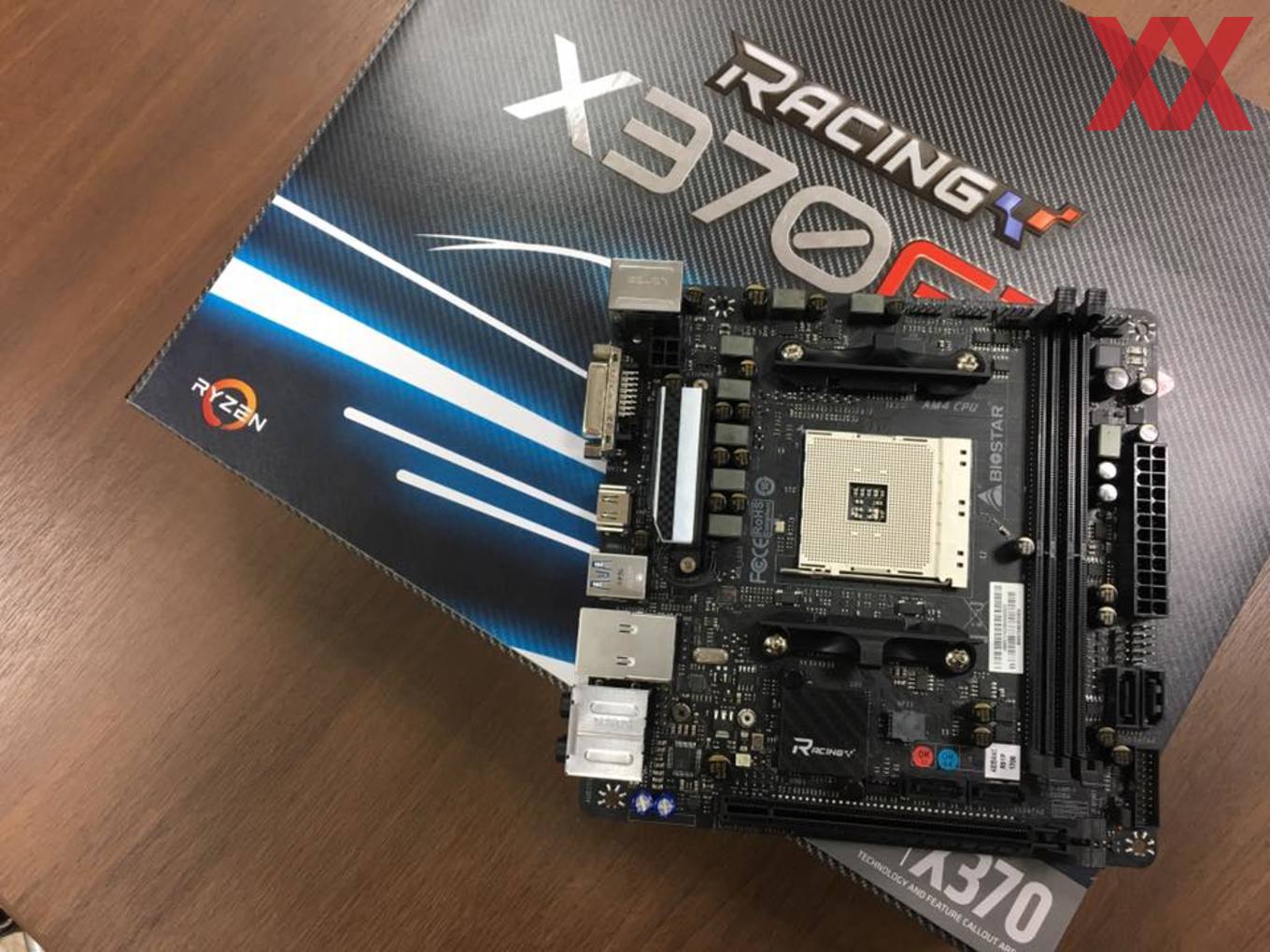
Table 1. Specifications of the considered coolers.
| Model | Cooler Master Susurro (RR-KCT-T9E1) |
GlacialTech Igloo 7200 Light | Titan Vanessa S-type | ||
|---|---|---|---|---|---|
| Processors supported | AMD Socket 754/939/940/M2 9 0118 | AMD with Socket 754/939/ 940 | AMD Socket A/754/939/940/M2, Intel Socket 478 and LGA775 |
||
| n/a | |||||
| Weight, g | 685 | 398 | 550 | ||
| Radiator | |||||
| mm | 77x92x40 | 77x68x60 | 92x85x144 | ||
| Material | Copper 99.97% | Aluminum fins + copper base and three copper heat pipes | |||
| Fan | |||||
| Dimensions, cube mm | 92x92x25 (weight 75g) |
80x80x18 9bearing 0115 | |||
| Speed, rpm, ±10% | 800-2800 (controlled by thermistor) | 1900 | 1200-2400 | ||
| Maximum capacity, CFM | n.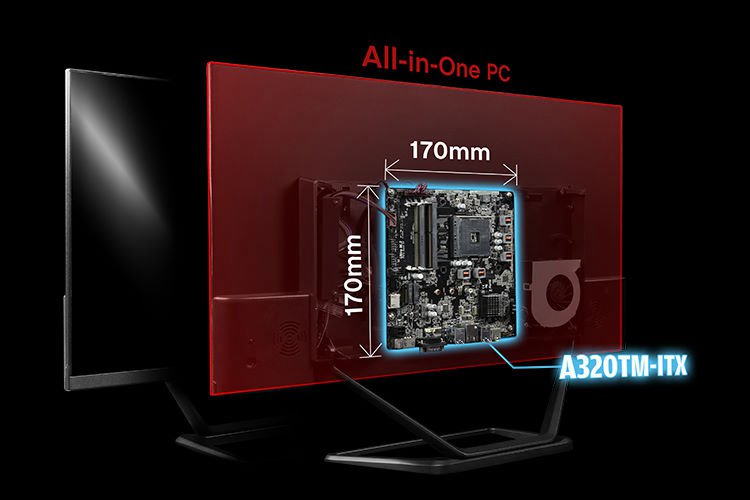 a. 21.96-46.14 a. 21.96-46.14 |
||||
| Max. air pressure | n.a. | 12 | 12 | 12 | |
| Current consumption, A | 0.83 | 0.19 | 0.21 | ||
| Noise level, dBA | 16 (sound pressure at a distance of 1 m at medium load) |
20 | 20-29 | ||
| Life time, thousand hours | 50 | 50 | 50 | ||

.png)
 The «inlet» temperature during the measurements was maintained at 22 degrees Celsius.
The «inlet» temperature during the measurements was maintained at 22 degrees Celsius. 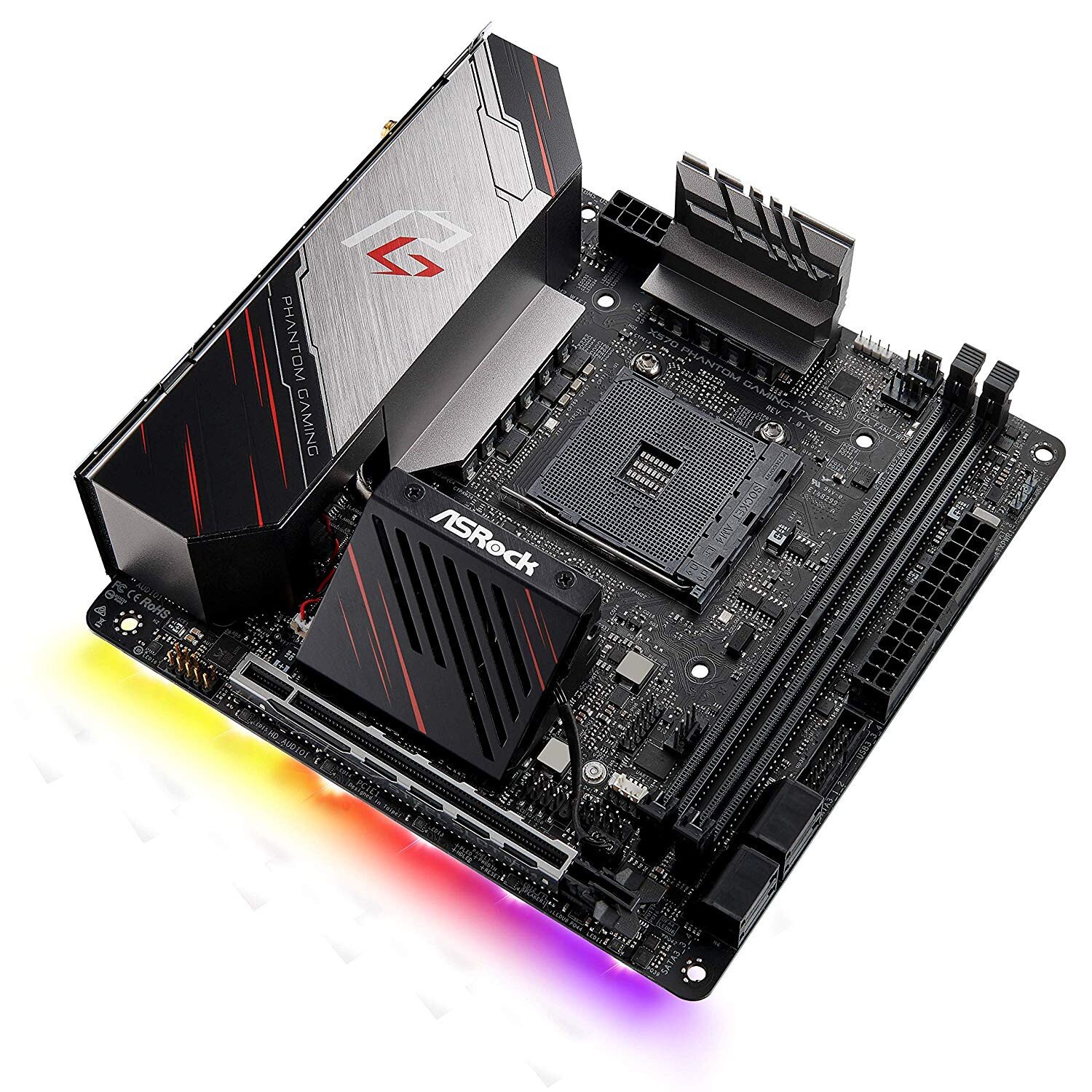

 Physically, sound level (pressure) measurements were carried out in the near (and diffuse) field at a distance of 25 cm from the surface of the cooler fan (the values obtained in this case exceed the background level of the room with a margin and quite reasonable measurement error), and then the data were recalculated to an equivalent distance of 1 meter subtracting 12 dB from them. The scalability of the results for the sound level was further verified by measurements at distances of 25, 50 and 100 cm and confirmed the validity of this approach. (Of course, all other sources of PC noise, fans and hard drives, were excluded during such tests.) It is clear that this approach has a number of pitfalls, however, apparently, this is exactly what cooler manufacturers themselves do, measuring levels in the region of 16-20 dBA, because otherwise it would be very problematic to register them with guarantee ;).
Physically, sound level (pressure) measurements were carried out in the near (and diffuse) field at a distance of 25 cm from the surface of the cooler fan (the values obtained in this case exceed the background level of the room with a margin and quite reasonable measurement error), and then the data were recalculated to an equivalent distance of 1 meter subtracting 12 dB from them. The scalability of the results for the sound level was further verified by measurements at distances of 25, 50 and 100 cm and confirmed the validity of this approach. (Of course, all other sources of PC noise, fans and hard drives, were excluded during such tests.) It is clear that this approach has a number of pitfalls, however, apparently, this is exactly what cooler manufacturers themselves do, measuring levels in the region of 16-20 dBA, because otherwise it would be very problematic to register them with guarantee ;). 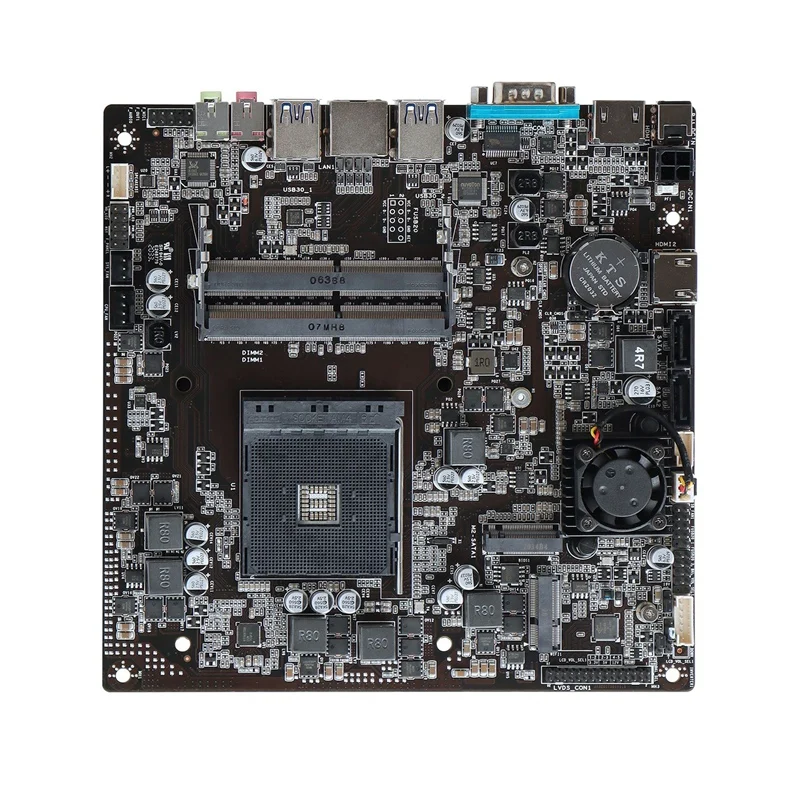 (By the way, in our measurements, switching the device to a free field, we got readings 1-1.5 dBA lower!) Nevertheless, the results we obtained at the lowest noise levels (the most critical for the error) differ from the specifications of coolers by 2 dBA (upward), which allows us to conclude that the concept of the approach we used in this case is correct and that we obtain quite realistic figures for the noise level of coolers. The results of our noise measurements are shown in the following diagram along with the fan tachometer readings.
(By the way, in our measurements, switching the device to a free field, we got readings 1-1.5 dBA lower!) Nevertheless, the results we obtained at the lowest noise levels (the most critical for the error) differ from the specifications of coolers by 2 dBA (upward), which allows us to conclude that the concept of the approach we used in this case is correct and that we obtain quite realistic figures for the noise level of coolers. The results of our noise measurements are shown in the following diagram along with the fan tachometer readings.  Whereas its competitors, even if they work at the minimum standard speed for themselves, are oh so far from it in terms of noiselessness.
Whereas its competitors, even if they work at the minimum standard speed for themselves, are oh so far from it in terms of noiselessness. 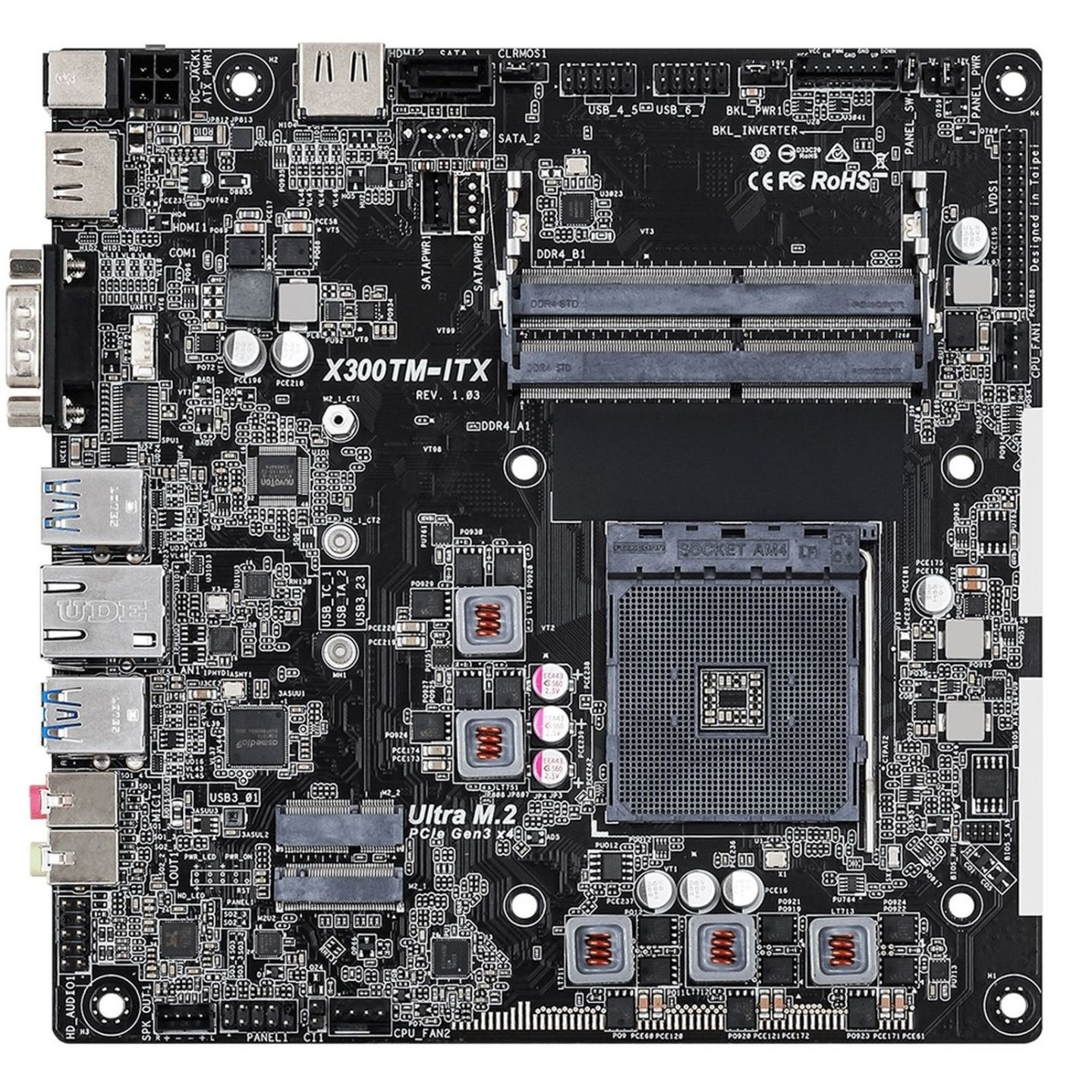 However, in order for this saving to be more tangible for us, we should use correct cooling systems — there is no need to lower the «degree of the processor» by any means (lowering the degree is not recommended at all;)). You can simply keep the processor temperature at an acceptable (permissible by specifications) level, but at the same time not shake the air with insanely rotating propellers, but limit yourself to the minimum sufficient rotation speed of the processor cooler fan, regulated from the “correctly taken” temperature. And it is precisely for this — that is, for the fact that it does not waste air and provides an unprecedentedly low level of noise in real user work with the right level of cooling — we with a clear conscience give our original design award to Cooler Master’s Susurro cooler. He deserved it!
However, in order for this saving to be more tangible for us, we should use correct cooling systems — there is no need to lower the «degree of the processor» by any means (lowering the degree is not recommended at all;)). You can simply keep the processor temperature at an acceptable (permissible by specifications) level, but at the same time not shake the air with insanely rotating propellers, but limit yourself to the minimum sufficient rotation speed of the processor cooler fan, regulated from the “correctly taken” temperature. And it is precisely for this — that is, for the fact that it does not waste air and provides an unprecedentedly low level of noise in real user work with the right level of cooling — we with a clear conscience give our original design award to Cooler Master’s Susurro cooler. He deserved it! 